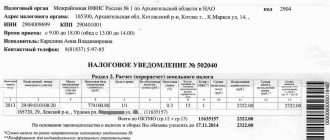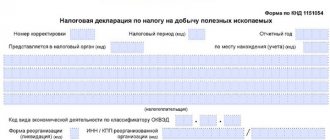What is tax charged on?
On profit, that is, on the difference between income and expenses.
Income is revenue from the main activity (income from sales), as well as amounts received from other activities. For example, from leasing property, interest on bank deposits, etc. (non-operating income). When taxing profits, all income is taken into account without VAT and excise taxes.
Expenses are justified and documented expenses of the enterprise. They are divided into costs associated with production and sales (employee wages, purchase price of raw materials, depreciation of fixed assets, etc.) and non-operating costs (negative exchange rate differences, court and arbitration fees, etc.). In addition, there is a closed list of expenses that cannot be taken into account when taxing profits. These are, in particular, accrued dividends, contributions to the authorized capital, loan repayments, etc.
During tax audits, most problems arise precisely because of expenses: inspectors declare that expenses are not economically justified, primary documents are drawn up incorrectly, etc., etc. Therefore, accountants, as a rule, pay increased attention to documents confirming expenses.
Tax on dollar deposits
The most important thing for owners of dollar deposits is that no tax is charged on the difference in dollar exchange rates at the beginning and end of the deposit period. For example, if 100 thousand dollars on a deposit initially cost 6.3 million rubles, and by the end of the deposit period it was already worth 8 million rubles, then you will not have to pay tax on the difference of 1.7 million rubles.
Interest on dollar deposits is close to zero, so only very large dollar deposits are subject to tax. To calculate the tax, interest on them is recalculated into rubles.
At what point to recognize income and expenses when calculating income tax?
There are two ways to recognize income and expenses: the accrual method and the cash method.
The accrual method provides that income and expenses are generally recorded in the period in which they arise, regardless of the actual receipt or payment of money. For example: an organization under a contract must pay office rent for August no later than August 31, but the rent payment is transferred only in October. Under the accrual method, the accountant must record this amount as an expense in August rather than in October.
Under the cash method, income is generally recognized when money is received in the current account or cash register, and expenses are recognized when the organization pays off its obligation to the supplier. So, if office rent for August was actually paid in October, then using the cash method, the accountant will show expenses in October, and not in August.
The organization has the right to choose which of the two methods - accrual or cash - it will use. But there is a limitation: any enterprise can use the accrual method, and banks are prohibited from using the cash method. In addition, in order to switch to the cash method, the following condition must be met: sales revenue excluding VAT on average for the previous four quarters cannot exceed one million rubles for each quarter. The same limit must be maintained during the time when the company uses the cash method. If the maximum revenue is exceeded, the organization is obliged to switch to the accrual method from the beginning of the current year. The chosen method is fixed in the accounting policy for the corresponding year and is applied during this year.
Get a sample accounting policy and do accounting in a web service for small LLCs and individual entrepreneurs Get it for free
How to calculate income tax
You need to determine the tax base (that is, the profit subject to tax) and multiply it by the appropriate tax rate. For profits subject to different rates, the bases are determined separately.
The tax base is calculated on an accrual basis from the beginning of the tax period, which corresponds to one calendar year. In other words, the base is determined during the period from January 1 to December 31 of the current year, then the calculation of the tax base begins from scratch.
If at the end of the year it turns out that expenses exceeded income and the company incurred losses, then the tax base is considered equal to zero. This means that the amount of income tax cannot be negative; the amount of tax must be either zero or positive.
The correctness of the calculation of the base must be confirmed by entries in the tax registers. Each enterprise develops these registers independently and consolidates them in its accounting tax policy. In practice, tax accounting registers are similar to accounting registers. Two types of accounting - tax and accounting - are needed to reflect the different rules for the formation of income and expenses that apply respectively in tax and accounting. In some cases, “tax” and “accounting” profits may coincide (see “Instructions for the new edition of PBU 18/02 “Accounting for corporate income tax calculations”, which must be applied from 2021”).
Check the counterparty for the accuracy of information in the Unified State Register of Legal Entities and signs of a shell company
Responsibility for violation of the deadline for payment of advances
Sanctions for late transfer of taxes to the budget are established in Art. 122 of the Tax Code of the Russian Federation. However, this article deals with non-payment of a tax payment, to which the advance tax does not apply, since it does not represent the tax itself, but only a preliminary payment for it. In this regard, the imposition of a fine for late payment of a monthly or quarterly advance on profits is unacceptable.
However, if payment is not received by the budget within the established time frame, penalties will be charged for each day of delay based on 1/300 of the current refinancing rate for the first 30 days, and 1/150 of the refinancing rate for subsequent days (Article of the Tax Code of the Russian Federation ).
How to calculate advance payments for income tax
During the year, the accountant must calculate advance payments for income tax. There are two ways to calculate advance payments.
The first method is established for all organizations by default and provides that the reporting periods are the first quarter, half a year and nine months. Advance payments are made at the end of each reporting period. The payment amount based on the results of the first quarter is equal to the tax on profits received in the first quarter. The advance payment at the end of the half-year is equal to the tax on the profit received for the half-year, minus the advance payment for the first quarter. The amount of payment based on the results of nine months is equal to the tax on profit for nine months minus advance payments for the first quarter and half of the year.
Plus, monthly advance payments are made during each reporting period. At the end of the reporting period, the accountant withdraws the advance payment based on the results of this period (we have given the calculation rules above), and then compares it with the amount of monthly payments made within this period. If the total monthly payments are less than the final advance payment, the company must pay the difference. If there is an overpayment, the accountant will take it into account in future periods.
Monthly advance payments are calculated according to the following rules. In the first quarter, that is, January, February and March, the accountant calculates the same monthly advance payments as in October, November and December of the previous year. In the second quarter, the accountant takes tax on the profit actually received in the first quarter, and divides this figure by three. The result is the total of the monthly advance payments for April, May and June. In the third quarter, the accountant takes the tax from the actual profit for the six months, subtracts the advance payment of the first quarter, and divides the resulting figure by three. The amount of monthly advance payments for July, August and September comes out. In the fourth quarter, the accountant takes tax from the profit actually received for nine months, subtracts advance payments for six months, and divides the resulting value by three. These are advance payments for October, November and December.
The second way is based on actual profit. The company can adopt this method voluntarily. To do this, you need to notify the tax office no later than December 31 that during the next year the company will switch to calculating monthly advance payments based on the actual profit received. With this method, the reporting periods are one month, two months, three months, and so on until the end of the calendar year. The advance payment for January is equal to the tax on profits actually received in January. The advance payment for January-February is equal to the tax on profits actually received in January and February minus the advance payment for January. The advance payment for January-March is equal to the tax on profits actually received in January-March minus advance payments for January and February. And so on until December.
An organization that has previously chosen the second method of calculating advance payments (that is, based on actual profits) has the right to refuse it and return to the first method from the beginning of next year. To do this, you need to submit a corresponding application to the Federal Tax Service no later than December 31 of the current year. If you return to the first method, the advance payment for January-March will be equal to the difference between the advance payment for nine months and the advance payment for six months of the previous year.
Companies whose sales revenue excluding VAT during the four previous quarters did not exceed an average of 15 million rubles per quarter must accrue only quarterly advance payments. This rule, regardless of the amount of revenue, also applies to budgetary, non-profit and some other organizations.
Newly created organizations accrue not monthly, but quarterly advance payments until a full quarter has passed from the date of their state registration. Then the accountant must look at what the sales revenue is (excluding VAT). If it does not exceed 5 million rubles per month or 15 million rubles per quarter, the company can continue to accrue only quarterly advance payments. If the limit is exceeded, the company switches to monthly advance payments from the next month.
When is tax considered paid?
The tax is considered paid from the moment you submit a payment order to the bank for its transfer and there is enough money in your current account. If you pay tax in cash, it is considered paid from the moment the money is transferred to the bank's cash desk. It doesn't matter when the money comes into the budget. Even if, due to the fault of the bank, they do not get there at all (for example, in the event of a bank bankruptcy), the tax office will not be able to make a claim against you.
Individual entrepreneurs can pay taxes in cash through a bank, and in its absence, through the cash desk of the local administration or a postal organization (clause 3, clause 3, article 45, clause 4, article 58 of the Tax Code of the Russian Federation, letter of the Ministry of Finance of Russia dated April 22 2008 No. 03-02-07/1-155).
For the transfer of taxes by individual entrepreneurs through the structural divisions of Sberbank of Russia, payment document forms No. PD (tax) and No. PD-4sb (tax) are provided (letter of the Ministry of Taxes of Russia No. FS-8-10/1199 and Sberbank of Russia No. 04-5198 dated September 10, 2001 G.).
If the tax is transferred through the post office or local administration, the individual entrepreneur is issued a receipt (clause 4 of article 58 of the Tax Code of the Russian Federation).
The tax is considered paid from the day when an individual entrepreneur deposits cash in a bank or cash desk of a local administration or in a postal service organization. In this case, the payment document must correctly indicate the Federal Treasury account and the name of the recipient's bank, otherwise the tax will not be considered paid (clause 3, clause 3, clause 4, clause 4, article 45 of the Tax Code of the Russian Federation). If the local administration or post office returned the money to the entrepreneur, the tax is also unpaid (clause 3, clause 4, article 45 of the Tax Code of the Russian Federation).
Let us note that banks, local administrations and post offices do not have the right to charge organizations and individual entrepreneurs for transferring payments to the budget (clause 4 of article 58, clause 2 of article 60 of the Tax Code of the Russian Federation).
There is another way to settle accounts with the budget - to offset the overpayment of this tax or other taxes, penalties and fines against the payment of the “simplified” tax (clauses 1, 4, 14 of Article 78 of the Tax Code of the Russian Federation). In this case, the tax is considered paid from the day the tax inspectorate makes a decision on offset (clause 4, clause 3, article 45 of the Tax Code of the Russian Federation).
Read about the conditions under which tax is considered paid in the berator.
When to transfer money to the budget
If the reporting periods are a quarter, half a year and nine months, then advance payments based on the results of the reporting periods are made no later than April 28, July 28 and October 28, respectively. The monthly advance payment for January should be transferred no later than January 28, for February - no later than February 28, and so on until December inclusive.
If the company makes advance payments based on actual profits, then the advance payment for January is made no later than February 28, for January-February - no later than March 28, and so on, until January 28 of the next year.
Regardless of the chosen method of calculating advance payments, at the end of the calendar year, the accountant displays the total amount of income tax for the past year. Then he compares it with the amount of advance payments accrued at the end of the reporting periods. If the total amount of advance payments is less than the final tax amount, the company pays the difference to the budget. If there is an overpayment, the accountant will take it into account in the following periods. The total amount of income tax must be paid no later than March 28 of the following year.
Automatically generate a tax payment invoice based on the data from the declaration and submit reports via the Internet
How to pay
For the first time, savers will have to pay tax on deposit interest in the fall of 2022 (by December 1), when the IRS sends out tax notices for 2021. At the beginning of next year, all banks will report to the Federal Tax Service on all the interest they paid to individuals in 2021 (therefore, there is no point in splitting deposits between different banks). The only exception will be ruble accounts with a rate below 1%; they are not taken into account when calculating tax. After this, the tax service itself will calculate the tax for each depositor. If the amount of income on all deposits of the investor is less than 42.5 thousand rubles, then you will not have to pay anything. If more, you will have to pay 13% of the difference. The investor himself does not need to declare anything. The tax amount will be indicated in a single notification along with taxes on the apartment, dacha and car.
You can avoid paying tax or reduce it if the income on the deposit is spread between two or three calendar years. Large deposits with interest payments at the end of the term are unprofitable
If interest income on deposits received this year exceeds 42.5 thousand rubles, you will have to pay 13% of the difference. It is not the deposits that are taxed, only the interest. It is possible that interest paid this year that accrued before 2021 will not be taken into account, but there is no final decision on this matter. There are also no benefits (for example, for pensioners).
Infographics "RG" / Leonid Kuleshov / Igor Zubkov
How to report income taxes
Companies whose activities are completely transferred to one or more special tax regimes (simplified system or payment of a single agricultural tax) may not report income tax.
All other legal entities that have made at least one transaction involving the receipt or expenditure of cash or non-cash funds, regardless of whether they have income, must submit income tax declarations to the inspectorate based on the results of the reporting and tax periods.
The income tax return for the tax period (year) must be submitted to the inspectorate no later than March 28 of the following year. Non-profit organizations that do not have an obligation to pay tax submit a simplified form of declaration. All other enterprises, regardless of their obligation to pay tax, submit year-end declarations in full form.
Companies whose reporting periods are quarterly, half-yearly and nine months report in a simplified form no later than April 28, July 28 and October 28, respectively.
Organizations for which the reporting periods are one month, two months, and so on, report in a simplified form no later than February 28, March 28, and so on until January 28 of the following year.
Results
For each tax, the legislation sets its own payment deadlines. They are determined either directly in the Tax Code of the Russian Federation, or in regional or local legal acts. Failure to comply with payment deadlines results in the accrual of penalties. In some cases, a fine may also be imposed. Therefore, it is better to strictly adhere to payment deadlines.
Sources:
Tax Code of the Russian Federation
You can find more complete information on the topic in ConsultantPlus. Free trial access to the system for 2 days.







